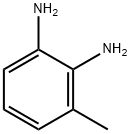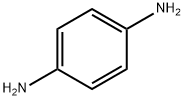1,5-Diaminopentane
Synonym(s):1,5-Diaminopentane;1,5-Pentanediamine;Pentamethylenediamine
- CAS NO.:462-94-2
- Empirical Formula: C5H14N2
- Molecular Weight: 102.18
- MDL number: MFCD00008239
- EINECS: 207-329-0
- SAFETY DATA SHEET (SDS)
- Update Date: 2024-12-18 14:08:57

What is 1,5-Diaminopentane?
Description
Yes, it’s what you think it is: a foul-smelling compound found in putrefying animal tissue. Cadaverine, or 1,5-pentanediamine, is formed by the decarboxylation of the amino acid lysine. It and its companion decomposition product putrescine (1,4-butanediamine) also contribute to odors associated with bad breath, urine, semen, and bacterial vaginosis.
Chemical properties
colourless to light yellow liquid with a very unpleasant smell
The Uses of 1,5-Diaminopentane
1,5-Diaminopentane is mainly used in organic synthesis.
The Uses of 1,5-Diaminopentane
Cadaverine is a diamine that can be used in hetarylation with halopyridines (2-bromo, 2-iodo, and 3-iodo-pyridines) to synthesize N,N′-dipyridinyl diamine derivatives in the presence of CuI-2-isobutyrylcyclohexanone as a catalyst. It can also be used to synthesize a poly-imidazolium polymer with high thermal stability by reacting with acetic acid, pyruvaldehyde and formaldehyde by modified Debus-Radziszewski reaction.
What are the applications of Application
Cadaverine is a biogenic amine
Definition
ChEBI: An alkane-alpha,omega-diamine comprising a straight-chain pentane core with amino substitutents at positions 1 and 5. A colourless syrupy liquid diamine with a distinctive unpleasant odour, it is a homologue of putresceine and is formed by the bacterial decarboxylation of lysine that occurs during protein hydrolysis during putrefaction of animal tissue. It is also found in plants such as soyabean.
Production Methods
1,5-Diaminopentane can be prepared by methods similar to those described for 1,4-diaminobutane. The starting materials are 1,5-dichloropentane (obtainable from tetrahydropyran), glutarodinitrile, or glutaraldehyde. The compound is hygroscopic and has a very bad odor.
General Description
Cadaverine, a biogenic amine, belongs to the class of aliphatic diamines and is commonly found in food products including cheese, fish products, fermented sausages, fish sauces, etc. It can be used as a freshness marker and as an indicator of microbial spoilage since it is most commonly identified in food products as a result of inappropriate storage conditions and microbial contamination.
Flammability and Explosibility
Not classified
Safety Profile
Poison by intravenous, rectal, and subcutaneous routes. Moderately toxic by skin contact. An irritant, sensitizer, and allergen. Mutagenic data. When heated to decomposition it emits highly toxic fumes of NOx.
Purification Methods
Purify the base by distillation, after standing over KOH pellets (at room temperature, i.e. liquid form). Its dihydrochloride has m 275o (sublimes in a vacuum), and its tetraphenyl boronate has m 164o. [Schwarzenbach et al. Helv Chim Acta 35 2333 1952, Beilstein 4 IV 1310.]
Properties of 1,5-Diaminopentane
| Melting point: | 9 °C |
| Boiling point: | 178-180 °C(lit.) |
| Density | 0.873 g/mL at 25 °C(lit.) |
| vapor pressure | 1.29-17hPa at 20-25℃ |
| refractive index | n |
| Flash point: | 145 °F |
| solubility | 1 M HCl: soluble0.5g/10 mL, clear, colorless |
| form | Liquid |
| pka | 10.05(at 25℃) |
| color | Clear colorless to yellow |
| Odor | characteristic odor |
| Water Solubility | soluble |
| Sensitive | Air Sensitive & Hygroscopic |
| Merck | 14,1609 |
| BRN | 1697256 |
| Stability: | Stable. Incompatible with acid chlorides, acids, acid anhydrides, strong oxidizing agents, carbon dioxide. |
| CAS DataBase Reference | 462-94-2(CAS DataBase Reference) |
| NIST Chemistry Reference | 1,5-Diaminopentane(462-94-2) |
| EPA Substance Registry System | Cadaverine (462-94-2) |
Safety information for 1,5-Diaminopentane
| Signal word | Danger |
| Pictogram(s) |
 Corrosion Corrosives GHS05 |
| GHS Hazard Statements |
H314:Skin corrosion/irritation |
| Precautionary Statement Codes |
P280:Wear protective gloves/protective clothing/eye protection/face protection. P363:Wash contaminated clothing before reuse. P303+P361+P353:IF ON SKIN (or hair): Remove/Take off Immediately all contaminated clothing. Rinse SKIN with water/shower. P305+P351+P338:IF IN EYES: Rinse cautiously with water for several minutes. Remove contact lenses, if present and easy to do. Continuerinsing. P405:Store locked up. |
Computed Descriptors for 1,5-Diaminopentane
| InChIKey | VHRGRCVQAFMJIZ-UHFFFAOYSA-N |
1,5-Diaminopentane manufacturer
New Products
(S)-3-Aminobutanenitrile hydrochloride 4-Methylphenylacetic acid N-Boc-D-alaninol N-BOC-D/L-ALANINOL Tert-butyl bis(2-chloroethyl)carbamate 3-Morpholino-1-(4-nitrophenyl)-5,6-dihydropyridin- 2(1H)-one Furan-2,5-Dicarboxylic Acid Tropic acid 1-Bromo-3,5-Di-Tert-Butylbenzene S-2-CHLORO PROPIONIC ACID ETHYL ISOCYANOACETATE 2-Bromo-1,3-Bis(Dimethylamino)Trimethinium Hexafluorophosphate 4-IODO BENZOIC ACID 3-NITRO-2-METHYL ANILINE 1-(2,4-DICHLOROPHENYL) ETHANAMINE (2-Hydroxyphenyl)acetonitrile 4-Bromopyrazole 2-(Cyanocyclohexyl)acetic acid 4-methoxy-3,5-dinitropyridine 1-(4-(aminomethyl)benzyl)urea hydrochloride 2-aminopropyl benzoate hydrochloride diethyl 2-(2-((tertbutoxycarbonyl)amino) ethyl)malonate tert-butyl 4- (ureidomethyl)benzylcarbamate Ethyl-2-chloro((4-methoxyphenyl)hydrazono)acetateRelated products of tetrahydrofuran








You may like
-
 1,5-Diaminopentane CAS 462-94-2View Details
1,5-Diaminopentane CAS 462-94-2View Details
462-94-2 -
 1,5-Diaminopentane, 98% CAS 462-94-2View Details
1,5-Diaminopentane, 98% CAS 462-94-2View Details
462-94-2 -
 Cadaverine Free Base (1,5-Diaminopentane) extrapure CAS 462-94-2View Details
Cadaverine Free Base (1,5-Diaminopentane) extrapure CAS 462-94-2View Details
462-94-2 -
 Cadaverine CAS 462-94-2View Details
Cadaverine CAS 462-94-2View Details
462-94-2 -
 Cadaverine CAS 462-94-2View Details
Cadaverine CAS 462-94-2View Details
462-94-2 -
 Cadaverine CAS 462-94-2View Details
Cadaverine CAS 462-94-2View Details
462-94-2 -
 14714-50-2 (2-Hydroxyphenyl)acetonitrile 98+View Details
14714-50-2 (2-Hydroxyphenyl)acetonitrile 98+View Details
14714-50-2 -
 118753-70-1 98+View Details
118753-70-1 98+View Details
118753-70-1